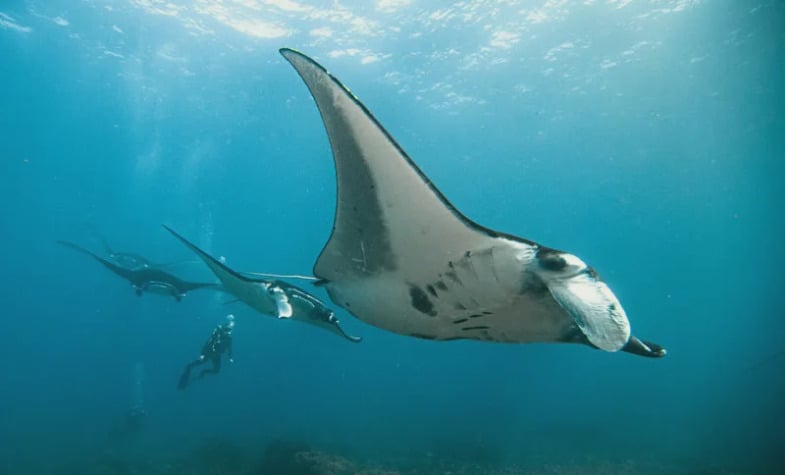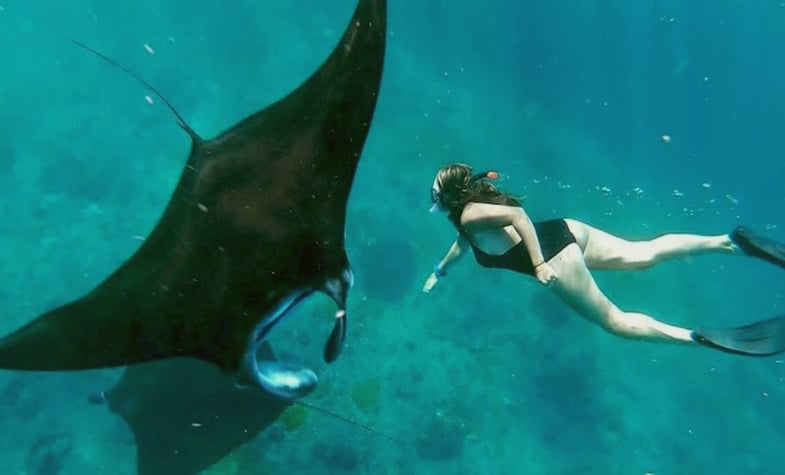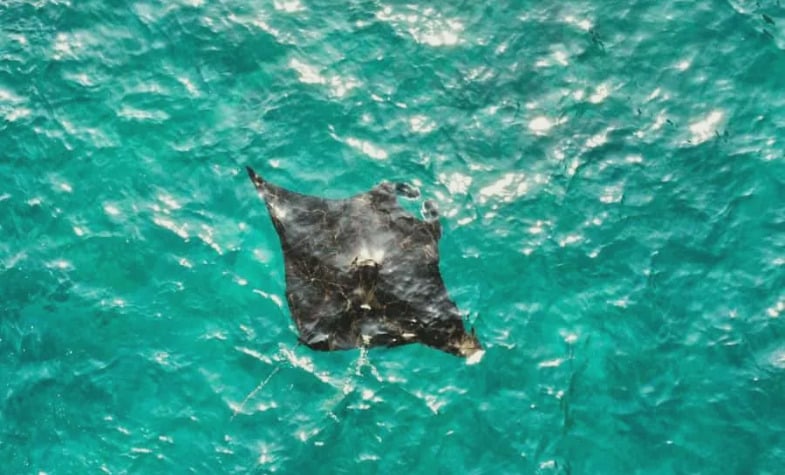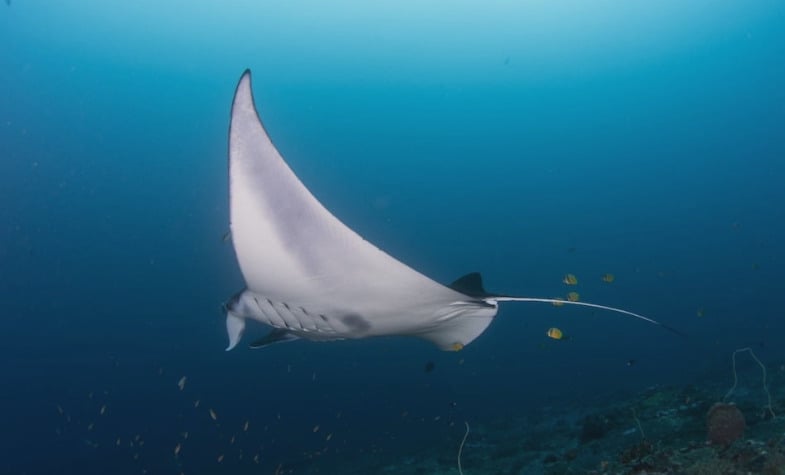Diving into Manta Point, Nusa Penida: A Marine Adventure
If you're dreaming of diving into crystal-clear waters and encountering majestic sea creatures, Manta Point in Nusa Penida should be at the top of your list. Known for its stunning underwater spectacles, this dive site offers a unique chance to swim alongside the awe-inspiring manta rays. But Manta Point isn't just about mantas—it's a rich marine paradise with a lot more to discover.
Diving experience at Manta Point

Overview of the Dive Site
Manta Point is celebrated for its almost year-round manta ray sightings. This popular dive site is located off the southwestern coast of Nusa Penida, an island in Bali. The dive typically begins at a sandy area near the cleaning stations, where manta rays come to get rid of parasites.
Typical dive journey
Your dive adventure starts at a sandbar, leading to the first cleaning station. Here, manta rays perform a fascinating dance, gliding gracefully as cleaner fish pick off parasites. From there, you'll often travel across vibrant coral plateaus to the next cleaning station, where you'll witness the bustling marine ecosystem.
Marine life encounters
Besides mantas, Manta Point is home to an array of marine life. Divers frequently spot reef sharks, including blacktip and bamboo sharks. The site also boasts a variety of rays, like the marble, eagle, and sting rays. With a bit of luck, you might even encounter a Mola Mola, the oceanic sunfish.
Manta Rays: The stars of the show

What is a Manta Ray cleaning station?
Manta rays visit cleaning stations, where they slowly circle coral heads to allow cleaner fish—primarily wrasses—to remove parasites and bacteria. This ecological interaction is not only crucial for the mantas but also a mesmerizing spectacle for divers.
Identifying Manta Rays
Each manta ray has a unique pattern on its belly, much like a human fingerprint. Divers can often recognize and even identify individual mantas by these distinctive patterns. Although mantas are usually present, their breeding season might see them gathering deeper, away from the cleaning stations.
Best times to see Manta Rays
While manta rays are generally seen throughout the year, their presence can vary. They might be less frequent during breeding periods or adverse weather conditions. However, with the right timing and conditions, encounters are nearly guaranteed.
Other marine life at Manta Point

Common and rare species
Beyond mantas, Manta Point is teeming with marine diversity. Look out for bamboo sharks and various stingrays. Macro enthusiasts will enjoy spotting rare nudibranchs, Zanzibar shrimps, and porcelain crabs. Recently, a stunning crown jellyfish was spotted here, adding to the site's allure.
Macro life and unique finds
The dive site is also known for its macro life. Small but fascinating creatures such as clownfish, surgeonfish, butterflyfish, and rabbitfish can be observed. Each dive can reveal different surprises, making every visit unique.
Snorkeling vs. Diving at Manta Point
Snorkeling opportunities
For those who prefer snorkeling, Manta Bay, near Broken Beach—is a popular spot, offering a high chance of manta sightings. However, the experience can be crowded with boats and snorkelers.
Diving advantages
Diving provides a more immersive experience. It allows you to explore deeper and interact with mantas and other marine life without the congestion often found in snorkeling areas. Plus, divers can enjoy a broader range of marine species and underwater landscapes.
How to get to Manta Point

Location and Access
Manta Point is situated on the southwest coast of Nusa Penida. To get there, you'll need to take a boat, typically departing from Toyapakeh in Nusa Penida or Sanur in Bali. The boat journey offers stunning views of Nusa Penida's coastline and notable landmarks such as Angel's Billabong and Broken Beach.
Travel details and boat trip
The boat trip from Toyapakeh or Sanur takes about 45 minutes. Along the way, you'll pass various scenic spots, including Gamat Bay and Crystal Bay. The boat ride itself is a pleasant experience, providing a glimpse of the island’s natural beauty.
Optimal diving conditions
Depth and visibility
Manta Point offers a range of depths from 8 to 35 meters. The shallow areas, where mantas are commonly seen, are around 8 to 12 meters deep. Visibility typically ranges from 10 to 20 meters, providing excellent conditions for both photography and diving.
Seasonal considerations
The best time to dive at Manta Point is generally throughout the year, although conditions can vary. Be mindful of potential rough seas or seasonal changes in marine life behavior.
Manta Point in Nusa Penida is a treasure trove of marine wonders. From the breathtaking sight of manta rays at their cleaning stations to the diverse underwater life, it offers an unforgettable diving experience. Whether you're a seasoned diver or a curious snorkeler, Manta Point is a must-visit destination for anyone passionate about marine life. If you’re interested in this information, please contact us to learn more!
***
Travel Authentic Asia Company is your best choice for discovering the beauty of Southeast Asia. Our experienced and knowledgeable travel advisors are committed to helping you create a tailor-made tour and extraordinary experiences in this majestic region.
If you're looking for an authentic cultural experience, do not hesitate to contact Travel Authentic Asia to choose a Vietnam tour, Southeast Asia tour package or to customize your own style tour to South East Asia.

